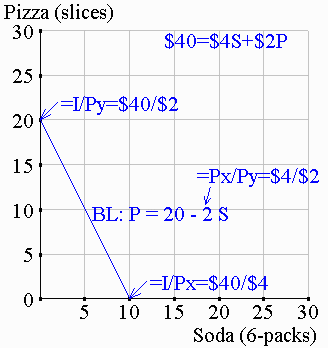| (1) The geometry of the BL The consumer's budget constraint: Rearranging terms to express the amount of Y you can buy as a function of how much X you buy gives us the budget line (BL):
I Px In the example here, you have a $40 food budget to spend on soda ($4 per 6-pack) and pizza ($2 per slice): P = ($40/2$) - ($4/$2)·S P = 20 - 2·S |
 |